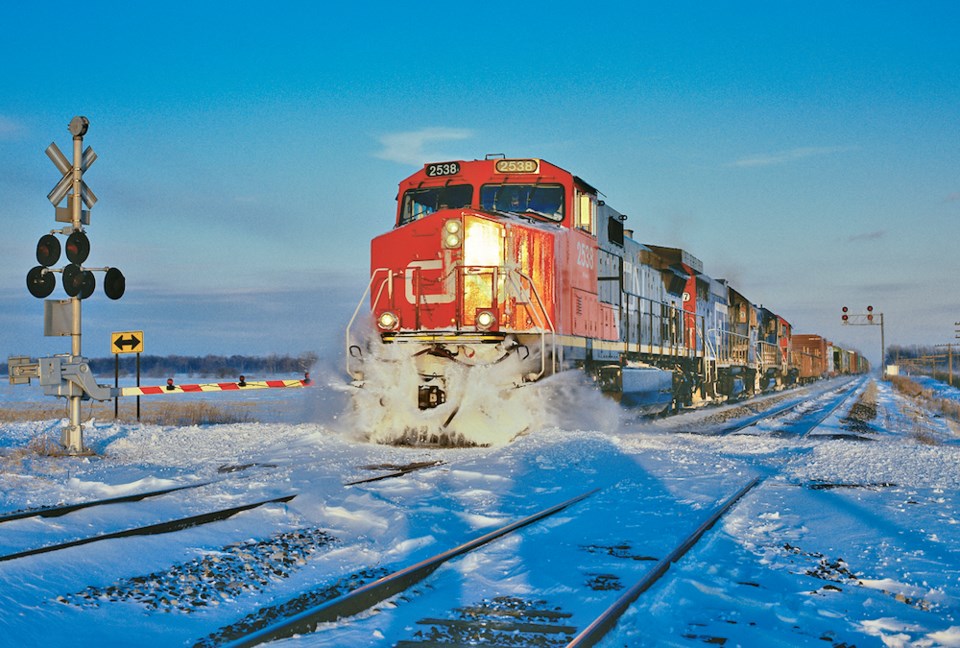WESTERN PRODUCER — “The issue we hear … as we travel to these markets and have frank conversations of business and other academics and think tanks, is that Canada falls woefully short,” said Carlo Dade, director of trade and trade infrastructure at the Canada West Foundation, a think tank that focuses on Western Canada.
Canada is falling behind jurisdictions like the U.S. in its ability to spend and spend intelligently on infrastructure, he said.
“There are concerns about our ability to deliver goods and our ability to meet the demands of markets, not just for quality but also for reliable delivery.”
Why it matters: Grain movement disruptions this year had industry worried that, if Canada can’t promise a consistent flow of product, its trading partners might look elsewhere.
Canada’s supply chains faced big hurdles this year. Some were weather related, such as the wildfires that devastated Jasper, Alta., and slowed rail traffic. Labour disputes also made a mark, with work stoppages at West Coast and Montreal ports, as well as trains briefly coming to a halt at Canada’s two major railways in late summer.
These disruptions don’t affect only agriculture, but that sector’s reliance on exports makes it particularly sensitive to supply chain shocks, said Keystone Agricultural Producers president Jill Verwey.
Canada’s governments tend to focus on solving immediate problems instead of systemic issues, said Dade.
“Doing that without an understanding of how investments to solve short-term problems impacts the overall system … is a recipe for continued dysfunction in the system,” he said. “The damage to our reputation isn’t just the individual issues. It’s the perception that we do not have a handle on the situation.”
International buyers don’t think about the nation’s internal drama, he noted. They’re only concerned with how Canada compares to other jurisdictions from which they can buy product.
Competition
At the time of the Dec. 11 event, Dade was fresh off a trip to China and said that nation is beginning to see the fruits of its Belt and Road Initiative, which involves investment in domestic and international economic corridors to move goods in and out of China.
“This includes moving goods in and out of jurisdictions that produce and sell what we produce,” he added.
Pointing to Canada’s trade competition with Brazil, he said that while the South American country isn’t officially part of the Belt and Road Initiative, it is getting Chinese investment that will help it move massive quantities of goods to markets like Asia.
Australia also has invested in systems and institutions that manage the movement of goods, he added.
Strategy needed
Dade suggested that a system of national supply chain planning would help investors make informed decisions. It would create more certainty and investors would know what projects are in the pipeline. A long-term strategy would mitigate short-term political decisions.
Verwey agreed that a long-term vision is needed.
“We’re constantly in a state of using those investment dollars short-term and not having a vision … to encourage investment by not only government but private sectors,” she said.
The federal National Supply Chain Office, created last December, will provide that strategy, said Robert Dick, who heads that office. The department’s mandate includes development and implementation of a national supply chain strategy. Publishing and implementing the strategy is listed among the priorities next year.
Dick said the strategy will focus on: enhancing capacity and resilience; supporting fluidity across borders; modernizing legislation and regulation; supply chain visibility and driving investment in the digital landscape.
“It is a strategy that’s designed to be flexible and evergreen to withstand the crisis of the moment.”
While it’s not possible to predict all future shocks, “we need to focus on the characteristics of a supply chain, and that’s what these areas aim to do.”
The office was established in the midst of pandemic pressures and high scrutiny on inflation and affordability. Today, Dick noted, those priorities have shifted to geopolitics, tariffs and cross-border dynamics.
Asked about key investments and costs to meet the strategy, Dick said Canada lags behind other G7 countries in investment into digitization and communications technology. Transportation, logistics and warehousing are the “most laggardly,” he said.
“Changing that involves an investment by government, but also by industry. We need to look at what are the barriers and the impediments that have prevented that.”
Dick cited work being done to determine needed infrastructure investment if Canada is to deliver on critical minerals, clean energy and other trade priorities.
About the author
Related Coverage
Canada's railways grind to a halt
Supply chain shakes off pandemic rust
Fertilizer buyers smell blood in the water
Supply chain report draws praise and criticism
Railways catching up with grain shipper demand
Rail lockout compounds grain transport woes




